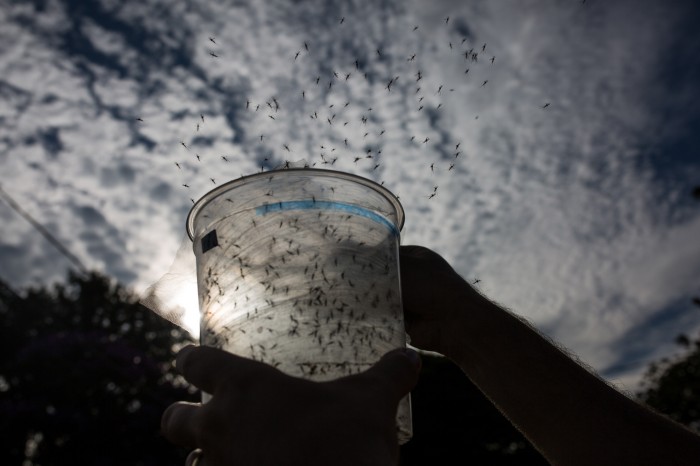In the Battle Against Zika, Researchers Prepare for a Marathon
The World Health Organization is no longer classifying Zika virus as an international public health emergency.
That’s not to say that it’s abated. Rather, the WHO is settling in for the long haul, deciding that the virus will be beaten by a steady, sustained effort—not quick fixes. “We are not downgrading the importance of Zika,” Pete Salama, executive director of WHO’s health emergencies program, explained to Science. “By placing it as a longer-term program of work, we are saying Zika is here to stay and WHO’s response is here to stay.”
The Zika virus causes only mild symptoms in those who contract it, and many never know they’re infected. But it has been linked to microcephaly, which means that pregnant women who contract the virus can give birth to children with severely shrunken heads and brains.

Good news, then, that a proposal to release genetically engineered mosquitoes in Florida to fight the virus has finally been given the green light. The initiative seeks to test whether modified Aedes aegypti insects developed by the British company Oxitec can be effective in limiting the spread of Zika. Its mosquitoes, which are male, pass on a gene to their offspring that causes them to die before adulthood, causing the population of insects to plummet.
The U.S. Food and Drug Administration had already approved the trial, but a public vote earlier this month saw locals split on the issue. Mosquito control officials in Florida have decided to go ahead with the tests, though the final site for the experiment has yet to be confirmed.
Meanwhile, the New York Times reports that the quest to find a vaccine for the virus continues. In total, at least 12 companies are now working to develop a vaccine, as well as numerous academics and researchers at the National Institutes of Health and beyond.
Researchers are confident that they can make one. “Without being presumptuous, most of us in the field feel that we will get a vaccine for Zika,” Anthony S. Fauci, the director of the National Institute of Allergy and Infectious Diseases at the NIH, told the Times. And indeed, human trials have already begun.
The bad news is that nobody knows how long it will take to find one that's reliable. Clearly, the WHO thinks that it could take some time.
(Read more: Science, Stat, New York Times, “Zika Attacked an Unborn Baby’s Brain as Doctors Watched,” “Florida Vote Spells Uncertain Fate for Genetically Engineered Mosquitoes,” “U.S. Government Starts Test of Zika Vaccine in Humans”)
Keep Reading
Most Popular
Large language models can do jaw-dropping things. But nobody knows exactly why.
And that's a problem. Figuring it out is one of the biggest scientific puzzles of our time and a crucial step towards controlling more powerful future models.
The problem with plug-in hybrids? Their drivers.
Plug-in hybrids are often sold as a transition to EVs, but new data from Europe shows we’re still underestimating the emissions they produce.
Google DeepMind’s new generative model makes Super Mario–like games from scratch
Genie learns how to control games by watching hours and hours of video. It could help train next-gen robots too.
How scientists traced a mysterious covid case back to six toilets
When wastewater surveillance turns into a hunt for a single infected individual, the ethics get tricky.
Stay connected
Get the latest updates from
MIT Technology Review
Discover special offers, top stories, upcoming events, and more.